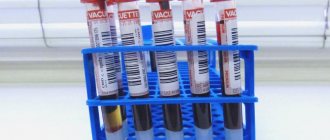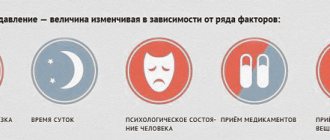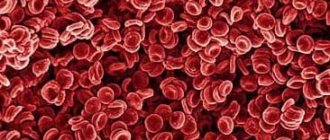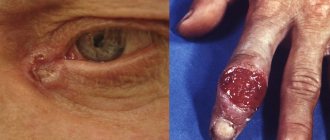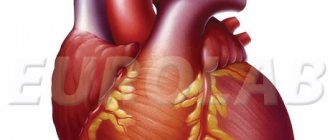For a long time, drug addiction was considered a bad habit, a promiscuity of a person. However, years of research have made it possible to prove that substance addiction is a disease and not a consequence of a bad character. Only a few can cope with this disease on their own; willpower alone is not enough to quit drugs.
Drugs change biochemical processes and affect the production of neurotransmitters, which help transmit electrochemical impulses from nerve cells. Becoming part of the “biochemistry” of the brain, they change a person’s personality and largely determine his behavior. The toxic effects of psychoactive substances make you feel worse. And the development of withdrawal syndrome leaves virtually no chance for independent withdrawal from the drug.
The effectiveness of therapy is largely determined by the stage of development of drug addiction. The longer a person does not seek help, the lower the chances of a complete cure - lifelong remission of this disease.
Facts about drugs and addiction
- Excessive use of alcohol and drugs causes mental and physical dependence.
- Social, psychological and neurobiological factors play an integral role in its development.
- Abuse causes a number of adverse consequences affecting the psyche and health of a person. This affects behavior, ability to work and learn.
- To stop abusing any drugs or alcohol, you need to enlist the help of a specialist.
Drugs and drug addiction
Drug addiction (drug addiction) is the abuse of psychoactive substances, which brings temporary and false positive emotions, but causes harm to a person’s health.
Provided that the use of the drug does not comply with any medical recommendations. Drugs are a spectrum of psychoactive substances that are addictive.
Psychological and physical dependence (withdrawal) are the most common motives for regular drug use.
Cocaine addiction (cocaineism) - features
Methods of using cocaine vary - from smoking, inhaling powder and rubbing into the oral mucosa, to intravenous and intramuscular injections. This drug is dangerous because it forms a very strong psychological dependence, which complicates the fight against it. Cocaine intoxication has two phases: the first is euphoric, which is the reason for its use, the second is dysphoric, when all the positive effects are replaced by negative ones (depression, anxiety, feelings of melancholy). It is the sharp change in phases that makes people repeatedly seek a dose of cocaine. Cocaine addiction is the most promising in terms of therapy.
How drug addiction manifests itself
Addiction can be either a mental or physical condition. It includes:
- Changes in character and way of thinking.
- Obsessive desire to get a dose of the drug.
- A feeling of psychological discomfort in the absence of a new portion of a narcotic substance.
- Changes in behavior, in particular the appearance of aggression against the background of withdrawal.
Depending on the type of substance abused by the patient, the development of stable mental and physical dependence occurs over a different period of time. For example, when using amphetamine it is 1-2 doses, and when chewing khat leaves it is several months.
"Chemistry" of pleasure
The functioning of the human brain depends on special substances called neurotransmitters or neurohormones. Among them there is a group of substances called endorphins – pleasure hormones. A certain level of endorphins is necessary for the balance between the processes of excitation and inhibition in the brain, as well as the regulation of positive and negative emotions. Normally, the human body produces a sufficient amount of endorphins
. The level of endorphins in the brain can fluctuate, and it determines whether a person is in an elevated or depressed mood.
Types of drug addiction
- Mental dependence. This means that a person achieves a feeling of well-being and satisfaction from taking the drug. He regularly experiences a strong desire to take the drug again to maintain and enhance these feelings.
- Physical dependence. This is the result of the body's adaptation to matter. Therefore, physical symptoms occur when the drug stops entering the body.
The most common symptoms are:
- nausea;
- diarrhea;
- tremor;
- headache;
- fever and even seizures.
These conditions are called withdrawal symptoms. Both mental and physical dependence contribute to the appearance of characteristic symptoms. This means that the addicted person uses more and more time and effort to obtain the drug.
What contributes to the development of addiction
To become addicted to a substance, it must be available in the community. In addition, there is a mixture of psychological and neurobiological conditions that may contribute to susceptibility to drug addiction.
Many substances (such as alcohol) make a person feel alert, well-being, relaxed and satisfied. It becomes an escape from the problems and difficulties of everyday life.
A number of medications relieve unpleasant symptoms, such as:
- pain - morphine-like substances;
- anxiety - benzodiazepines;
- sadness, depression and insomnia - antidepressants and sleeping pills.
These are the reasons why a person continues to take drugs, although he is well aware of their harm.
Who is prone to addiction?
Anyone, regardless of age and gender, can succumb to temptation. Some are much more vulnerable to abuse than others. Often these are people who have a lot of unresolved problems or individuals with low self-esteem. They may have difficulty communicating or feel that the demands placed on them by the environment are greater than they can meet.
In this context, it seems that individual personality characteristics, past life experiences and upbringing conditions may play a decisive role. However, no clear conclusions can be drawn on this basis. Drug abuse and addiction can develop in people who previously seemed stable and well-adjusted, or even in children from seemingly affluent families.
In recent years, it has been discovered that neurobiological changes also occur in the human brain, which subsequently become dominant. This leads to the fact that an addicted person cannot fully feel comfortable and experience positive emotions without using a portion of drugs. If he does not take a drug to which he has developed an addiction, then the world around him seems gray and hostile, and life loses its meaning.
Dear patients!
Drug addiction is a social problem. It is a mistake to think that homeless people or people with unfortunate lives become drug addicts. This can affect anyone. Someone from our circle, whom we do not suspect at all, can have problems with drugs, and despite this, have a great job, a wonderful family, or good grades at school and many friends.
Drug addiction is a disease, and like most diseases, it can affect anyone. There are many subtle signs of addiction that are very easy to miss. A person addicted to drugs rarely admits to the disease and almost always denies his addiction. You need to be able to discern the details in order to react and help in time.
Signs of drug addiction
A drug addict often experiences changes in behavior. Suddenly he completely changes his interests. Fluctuations in mood and activity appear - from excessive excitement and excess energy to apathy. Friendships with old friends cease and in a short time new acquaintances appear from nowhere. The style of clothing, a new hairstyle, earrings, tattoos may change. At the same time, launches in the field of personal care may appear.
There are attacks of aggression and anger, which pass after a minute. More often than not, such a person can be caught lying or cheating. The face, which until this time was close to us, moves away, closes in on itself, lives in its own world. These symptoms are so common that one can only assume there is a problem. In addition, this behavior can cause depression. Changes in behavior are not always noticeable. Our life has acquired a fast pace, so there is not enough time to be attentive even to those who are close to us. But sometimes it's worth stopping.
It is also worth paying attention to the appearance. The consequence of drug abuse is a sharp decrease in weight. Changes in facial skin color are also noticeable - it becomes sallow and pale, and skin changes may also appear on the face. The pupils are dilated or constricted. Another obvious sign of drug use is injection marks and bruises.
Symptoms of drug use
The effect after drug use depends on the type of drug, composition, dosage, and whether it is the first use or not. The following are common manifestations of the use of specific drugs:
- marijuana and hashish cause increased appetite, relaxation, heightened sense of smell and determination of taste, euphoria, causeless laughter, disorientation, drowsiness, increased sweating, rapid pulse;
- ecstasy - jaw tightening, eye twitching, sweating, increased heart rate and blood pressure, anxiety, agitation;
- LSD - loss of sense of direction, distance and time, hallucinations, increased blood pressure, sweating, paranoia, agitation, dilated pupils;
- hallucinogenic mushrooms - dilated pupils, sudden mood changes, hallucinations caused by a feeling of fear, a feeling of isolation, detachment from reality;
- amphetamine - large excess of energy, good mood, insomnia, lack of appetite, dilated pupils, anxiety;
- cocaine - dilation of pupils, euphoria, increased sensory perception, increased hearing;
- heroin - constriction of the pupils, drowsiness, vomiting, itching;
Manifestation of addiction
Every drug is addictive: some to a lesser extent, others to a greater extent. This happens because the body has adapted to a constant supply of drugs and now, without the psychoactive substance, it ceases to function properly.
Drugs can affect almost any organ in the body. Marijuana abuse can cause a dry, lingering cough. Prolonged catarrh, as well as nosebleeds, may indicate amphetamine use. Drugs affect the general functioning of the body, which is manifested by weakness, fainting, nausea, vomiting, and changes in the rhythm of bowel movements.
Drugs negatively affect the body's immune system, making the body less resistant to infections. Jumps in blood pressure and body temperature may occur. The condition of the teeth worsens. Pain appears in different parts of the body. Noticeable loss of appetite. Disorders of the mental system appear: disorders of consciousness, excessive sleepiness, apathy - some of the most common manifestations of protracted addiction. Hallucinations may occur.
Are you taking drugs?
It is not always easy to recognize drug use. If there are no symptoms that clearly indicate addiction, but if there are any doubts, it’s better to play it safe and talk. Drugs make you addicted and destroy your health. Even though drugs are illegal, they are still available. Drug addiction is an insidious disease that exploits human weaknesses.
Social aspects of drug addiction
Drug abuse usually develops at a relatively young age. Statistically, the risk of addiction in adulthood decreases. Young people love to gather in an environment where they find friends with similar views and interests. In such a society, it is easier to enter a state of dependence by following the bad example of peers.
At the initial stage, it is an interest in which curiosity forces a person to try. After consuming several portions of a narcotic substance, a persistent physical and mental dependence is developed. Further, the range of interests of such a person is reduced only to the extraction and use of drugs, and the dependence on them becomes stronger.
When did drug addiction start?
The first cases of drug addiction appeared at the beginning of the 19th century
, when opium and hashish were first brought to Europe. These substances were first used as painkillers. But by the beginning of the 20th century, in certain circles of society - mainly bohemians - opium and hashish addiction became a serious problem.
The second coming of fashion for drug use occurred in the 60s of the 20th century.
with the emergence of informal youth movements. Drugs then became a symbol of freedom and self-expression.
It was from that time that the number of drug addicts around the world began to grow rapidly.
According to the chief narcologist of the Russian Ministry of Health and Social Development, Evgeniy Bryun, the growth of drug addiction in the territory of the former Soviet Union began around 1982, when a drug supply channel from Afghanistan opened. And since then, the number of drug addicts has only grown.
What substances are addictive
People become addicted not only to illegal substances, but also to the drugs they receive from their doctor. It is also possible to become dependent on medications that are not considered drugs or on alcohol.
The most common illegal drugs that are abused are;
- cannabis;
- hallucinogens (PCP, LSD);
- amphetamine;
- ecstasy;
- cocaine;
- crack;
- heroin
and this is not a complete list.
Among the drugs is a group of sedatives and painkillers. For example, benzodiazepines or morphines.
What types of drugs are there?
Narcologists usually divide all known drugs into six main groups: 1. Opium derivatives
, or opiate drugs, are made from the opium poppy.
These include heroin, methadone and codeine. 2. Drugs made from hemp, or cannabinoids
- marijuana, hashish.
3. Hallucinogens
(LSD, mushrooms).
4. Psychostimulants
(cocaine, ephedron, amphetamines).
5. Sedatives
(barbiturates, etc.).
6. Volatile
narcotic substances (glue, solvents, etc.) Alcohol and tobacco are also psychoactive substances, but legally they are not considered drugs - there is no criminal liability for their distribution and use.
How to identify addiction
If you find that you are using substances:
- leads to health problems;
- affects performance;
- causes discord in the family;
- affects the mood;
- impairs memory and concentration;
- worsens relationships with loved ones;
- requires a large amount of material resources;
- cannot be terminated on its own;
- leads to discomfort when absent.
It means you're not doing well.
Even the presence of some of these symptoms already indicates a pronounced drug addiction and requires medical attention.
What is the danger of drug addiction?
If a substance is used over a long period of time, personality changes occur. As a rule, the addict becomes indifferent and rude. He begins to neglect education, work and relationships, and behaves aggressively.
- Discontinuation of the drug provokes serious adverse reactions. This causes unpleasant physical symptoms and in advanced cases is fatal.
- Drugs provoke mental problems and cause acute and chronic psychosis. They manifest themselves in the form of hallucinations, persecution mania and clouding of consciousness.
- The number of suicides among drug addicts is also increasing.
- Those who use syringes are susceptible to HIV, AIDS and hepatitis.
- In a state of drug intoxication, the risk of getting into an accident or becoming a victim of an accident increases.
- The constant desire to obtain additional medications leads to financial problems. They push people into crime and prostitution.
- Relatives suffer from the behavior of an addict. Most often these are children, spouses, parents.
How does the fight against drug addiction work?
As the negative effects of drug abuse become more apparent, longer and more intensive treatment is required.
The most important thing is identifying the problem and the person’s desire to work on it.
The process of getting rid of drug addiction comes down to the following steps:
- Dependency detection.
- Awareness of the problem and willingness to work on it.
- Seeking qualified help from a narcologist.
- Cleansing the body of drugs.
- Working with a psychologist and getting rid of psychological addiction.
- Subsequent preventive measures and restoration of health.
A big role in this process is played by the support of loved ones, necessarily non-drug addicts, and a change in social circle.
Treatment of addiction in a drug treatment clinic in Moscow
In a private drug treatment clinic, you can undergo treatment for chemical and non-chemical addictions. Modern addiction treatment programs help achieve rapid remission. Of course, treatment, regardless of the nature of the addiction, is a difficult task, but the participation of professionals and support from loved ones helps the addict overcome pathological cravings for something.
Effective treatment includes pharmacotherapy to restore the functioning of internal organs (for chemical addictions), as well as normalize the psycho-emotional background. Another important stage of therapy is undergoing psychological consultations with a specialist to eliminate the basis of addiction.
- Consultation with a psychologist
3000 days
Session lasts 1 hour
- Psychologist identifies the cause of psychological dependence
- Creating a resource state
- Help in solving the problem yourself
- Managing High Risk Situations
Communication is possible on an outpatient basis and online
order service
months
- Session lasts 1 hour
Communication is possible on an outpatient basis and online
order service
- Popular
Psychotherapy
5000 days
Consultation with a psychotherapist
Performed on an outpatient basis or online
order service
Psychotherapy
months
- Consultation with a psychotherapist
Performed on an outpatient basis or online
order service
- Classic hypnosis
13000 days.
Consultation with a narcologist on an outpatient basis
1 hour session
order service
months
- Consultation with a narcologist on an outpatient basis
1 hour session
order service




